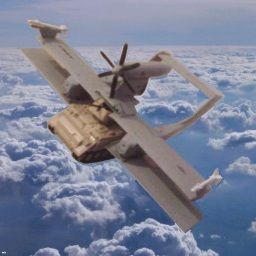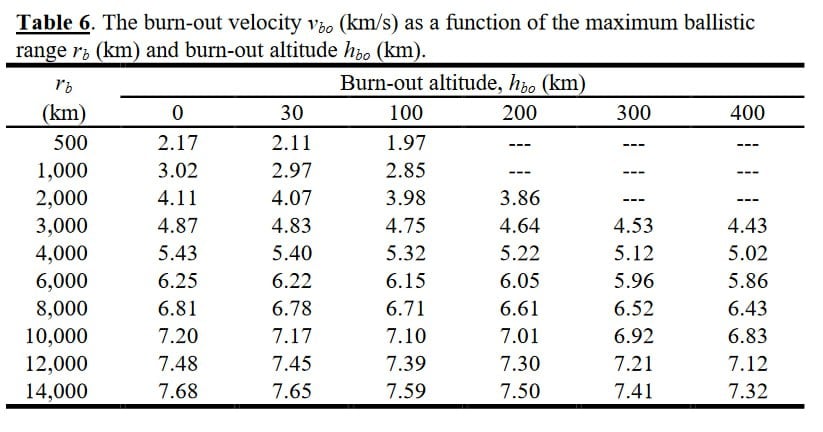Massive skill issue
- 2 Posts
- 13 Comments

 1·4 months ago
1·4 months agoAm “there”, AMA lol

 1·4 months ago
1·4 months agoIf memory serves me right, India uses Su-30, so this checks that box. Alternatively, Belarus might pitch in, after Lukashenko is overthrown. Algeria, Armenia and Vietnam have them as well.
With Tu-95… This requires some mental gymnastics. Obviously, Ukraine had them in the 90s, so the scene could take place then, but I don’t think this feels canon. However. In russia, there exists a region called Kuban, with significant proportion of ethnic ukrainians and history of separatism. Ukraine actually could have very legitimate claims on the region if this was still how it worked in 21st century. So, if we suppose a sort of greater Kuban, a Hippanis republic, reaching out to Engels air base, they could have Tu-95s after independence from Russia. Or I mean, a lot of post-russian states might have Tu-95s, but this is a boring answer, Ukraine landing on Taman peninsula to help establish Greater Kuban is the good ending.

 1·8 months ago
1·8 months agoThere were, including old ones for Leo2, and in USSR (Google “защита танка Т-54 типа Шатер” and “защита танка Т-54 типа Зонтик”, at that time it was intended against RPGs, of course, not drones), and here in Ukraine we had exactly the thing you proposed - folding overhead anti-drone screens on vehicles.
The answer to the question “why isn’t this type of protection mass-produced”, or rather “why aren’t cope cages being made foldable”, is that folding protection requires some resources and expertise to pull off, perhaps not that much, but still some, and with skill and resources you’re better off with more conventional spaced/grate armour and ERA, otherwise it isn’t worth it - not like cope cages significantly restrict the mobility of the tank in the steppes, anyway.
State actors don’t implement folding screens for the same reason you see much less cope cages from ukrainians - because it’s a fundamentally shitty and stupid solution. Proper solution against HEAT warheads from any direction is ERA, most russian tanks have outright crappy ERA coverage on turret roof, ours have it somewhat better. Rubber screens you see on Bulat tanks can also help, they are resin-metal mech composites and function as spaced armour to cover turret neck and areas around it. Proper solution against FPV drones is radioelectronic warfare, signal intelligence and jamming, the latter one can be done by a short range jammer mounted on a vehicle, and/or a longer range semi-stationary jammer in protected position nearby. Signal intelligence gives you the position of drone operator, then you hit him with artillery or mortars. Same way you don’t exactly try making tank threads which withstand mines - you get mine-clearing vehicles and send them forward.
If you want to do spaced armour for anti-drone protection - any state actor would develop a normal spaced armour package, which conforms to the shape of the vehicle, is spaced properly, and looks like conventional spaced armour screens. Any state actor besides Russia, apparently - they did have factory-produced cope cages for some tanks, but russia is a country of geniuses which installed ERA on the sides of T-80 so lazily that the whole screen fell off on trials and got stuck in suspension, can’t imagine how one could be unable to do something which is routinely done by soldiers in field repair, of course.

 1·8 months ago
1·8 months agoside impact - nothing Not nessesarily, perhaps?
A steel beam weights 10 to 100 kg per meter, railway rail is 40 kg/meter, so I’ll take 50 kg. Four story building in Europe is approximately 12m.
In the drawing, beam+timber are almost as long as the building is tall, so for simplicity we can assume 11m, of which 5m is the beam and 6m is the timber, and we can assume the pendulum being suspended at 1m above ground in resting position. Beam’s centre of mass is located at half it’s length, so 8.5m is our effective length. Angle at which the beam-timber are standing looks like, dk, 35°? Then, the beam is suspended ~5m above ground. A 250 kg beam would have potential energy of 12.5 kJ (close to .50 cal). Alternatively, I can guestimate a 100° swing arc and 32 kJ energy, which is slightly more than muzzle energy of 14.5mm anti tank rifle. With panzers 3 or 4 we’re looking at something like 15-20mm side armour, 14.5mm B-32 bullet (steel core) could pen 32mm at range, probably closer to 40+? point-blank. Of course, a bullet concentrates this force on a small area, through an I beam could also hit with a corner, give or take bigger kinetic energy of the beam and the need to puncture (absolute best case scenario, ofc) 15mm instead of 40+, and the fact that the bullet doesn’t expend all energy purely during pen, so required energy for penetration is even lower. Another interesting moment in considering impact to and near hatches, welds, riveted joints, etc, is that unlike a bullet, which penetrates and carries a significant portion of it’s kinetic energy inside - even a steel beam which initially punctured the armour with it’s corner would still get stuck and transfer all its energy to whichever it hit.
In conclusion, with an older/lighter WW2 tank the beam under optimal conditions could maybe perforate the armour, break some welds, or at least dent it. And if we’re talking about a less armoured vehicle, like an APC or an armoured car- the beam can either go through or significantly bend the ppate, likely disabling the vehicle. Could even work against IFVs (BMPs are cardboard, there are areas on the side which can be penned with small arms), through it’s hard to imagine how it would be worth the hassle in modern context. And in any case crew would get disorientated by their whole world turning into a bell.

 16·9 months ago
16·9 months agoNo need to invent new stuff, Ukraine can use them for parts, as false targets on airfields, or just repair some of them.

 4·9 months ago
4·9 months agoLikely fake, sadly, no confirmation and ua channels say it’s fake.

 1·9 months ago
1·9 months agoThey are slow enough to be counter-intercepted by antiair artillery

 1·9 months ago
1·9 months agoIt isn’t meant to intercept everything, just something, rest could be left to more conventional BMD. Kazakhstan in NATO sounds fun tho.
Road-mobile ICBMs, well, they are based in particular areas and Topol can only launch from a relatively small number of pre-determined sites, no idea why or on what’s the situation with Topol-M or Yars. Some are based close enough to Belarus to be in range of this proposed system, Belarus in NATO when
They only carry one warhead through, credible answer is to intercept the warheads outside the atmosphere, non-credible answer is to build a ground-to-ground strike capability into my system, then watch the launchers from orbit and strike before missiles are fully erected.

 1·9 months ago
1·9 months agoExoatmospheric interception is convinient, but can be made much harder with decoys, and those decoys can be very compact (a.e. inflatable warhead imitators), US BMD AFAIK isn’t even meant to deal with them. An ICBM deploys a “funnel” (don’t know the English technical term) of those targets along with real warheads, exactly to make interception difficult. Sprint was developed to intercept warheads below 60 km, where inflatable decoys, foil, radar reflectors etc would be either slowed down by drag way more than real warheads or burn up. Heavy decoys exist, but they take space on the missile and eat into payload weight significantly.
I took that concept and flipped it on its head, with interception happening before any decoys are released at all. Exoatmospheric interception is too credible anyway, and US already tried every whacky version of it, lol.

 2·9 months ago
2·9 months agoIt’s non-credible missile defence.
The numbers are, however, not made up, and that’s what makes the post funny in my opinion. For example here is a table for ballistic ranges derived from missile velocity; of course, like, it’s the roughest of estimations, because Sprint burns out very quickly and also would possibly slow down quicker than a TBM due to base drag, this could be mitigated, but whatever.


Firefox 130 introduces automatic alt text for PDF images and an improved alt text flow. In addition to protecting users’ privacy with a small language model that operates locally on their device, these improvements help ensure more images receive alt text resulting in more accessible PDFs.
A